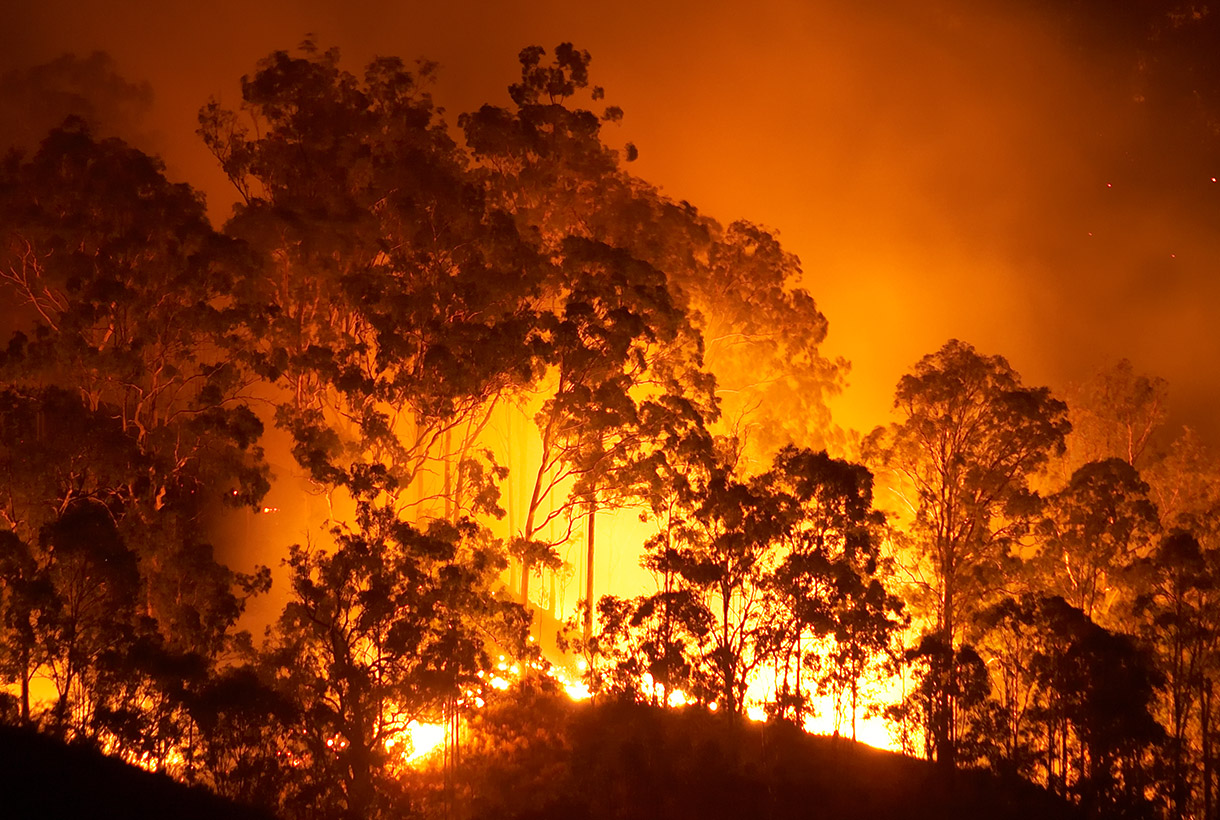While many of us may love a good zombie movie, we can all agree we don’t want to run into them off-screen. The good news is we’re not here to report a zombie sighting. The bad news is there’s a new breed of zombies threatening safety – zombie fires.
What Are Zombie Fires?
Also known as holdover fires or overwintering fires, zombie fires occur when wildfire flames smolder underground when the temperature drops. That’s right – the colder temps don’t kill these wildfires. They can also persist even when conditions are wet and when the oxygen supplying them decreases. What fuels zombie fires? Rather than brains, these zombies feed on things like debris from dead plants and peat. As spring approaches, they rise from the dead. This is yet another example of changing patterns in natural disasters that organizations need to prepare for.
Wildfires are a dynamic risk, having far-reaching and often unanticipated consequences. They put employees and public health at risk, not to mention the economic impact on organizations. Zombie fires add even more fuel to the “fire,” making a proactive approach based on modern technology and strategic insight necessary in order to contain the risks and build resilience.
Elevate Your Wildfire Preparedness
Improve your wildfire preparedness with expert tips and resources.
Why Wildfires Are a Dynamic Risk
The Canadian wildfires in 2023 and those emerging in 2024 demonstrate the broad and long-lasting impacts this type of event can have.
- Air quality: It’s no surprise wildfires have a negative impact on air quality, but the Canadian wildfires showed the extreme distances at which air quality became an issue. Nearly 60 percent of U.S. air pollution reports during the first half of 2023 occurred during the month of June, when the Canadian wildfires were at their peak, according to our data. The smoke even reached Europe.
- Public health: Poor air quality makes it harder for people to breathe, particularly for higher-risk individuals. Asthma-related ER visits rose by 17 percent in the U.S. across 19 various days of Canadian wildfire smoke between the end of April 2023 and the beginning of August 2023.
- Infrastructure: The zombie fire that came back to life in Fort Nelson, British Columbia was described as exhibiting “extreme fire behavior,” resulting in a hospital closure and disruptions to internet and phone services. Once infrastructure is impacted, it becomes even harder to notify and protect those in the path.
- Economic toll: Even the economy isn’t immune to wildfires. Lingering smoke and poor air quality results in cancellations of outdoor activities and declines in worker productivity, as well as increases in medical bills. Across the U.S., workers lost $125 billion a year as a result of wildfire smoke, according to a recent study.
The dynamic risk of wildfires poses an even bigger threat as the cost and fatalities from wildfires in the U.S. annually has increased over the past four decades. As temperatures continue to rise around the globe, the warmer and drier conditions are feeding the flames of both new and zombie wildfires.
So, are zombie fires rare? Several of the 2024 Canadian wildfires are actually zombie fires, pointing to the increasing prevalence of this extreme weather threat. A wildfire expert commented on this phenomenon, saying, “We’ve seen this before but never at this scale. I’ve been watching fire in Canada and abroad since the late ’70s. I’ve never seen anything like this.”
How Risk Managers Can Fight (Zombie) Fire With Fire
Wildfires are inherently unpredictable. Zombie fires add to the complexity of managing and mitigating this type of threat. Risk and resilience professionals need to take a big picture view of risk and a broad approach to risk management – much like the sweeping motion needed for effective use of a fire extinguisher.
You can assess your organization’s readiness with the following questions:
- Can I proactively monitor for wildfire threats and identify those that might impact my people and operations? AI-powered risk intelligence delivers fast, accurate, actionable information about your facilities and your people – including remote, hybrid and traveling employees – so you can quickly identify who and what is at risk.
- Do I have a fast and reliable way to collaborate with my crisis response team as the event unfolds? Incident management capabilities make it easy to activate response teams, share response and evacuation plans, and communicate in real time to adjust (a critical function since a wildfire can change path and/or escalate rapidly).
- Do I have the ability to notify impacted individuals in real time? Mass notifications enable risk managers to deliver geo-targeted alerts to only those people in the sphere of impact. Additional functionality like read-receipts, multi-channel delivery and two-way communications keeps leadership informed and allows people to mark themselves safe or ask for help.
If you answered “no” to any of these questions, it’s time to take a step back and reassess your wildfire readiness. If you need assistance, we’re here to help. We’re an industry-leading provider of end-to-end critical event management technology, but, more importantly, we’re your partner. We understand every minute counts during a wildfire.
We can help you monitor for this specific threat, ensuring triggers for alerts and escalation criteria are setup according to your specific parameters. When a wildfire does break out (zombie or not), our analysts can provide a summary of verified and contextualized information, updated in real time as the wildfire evolves, as well as a list of your potentially impacted people and assets.
At OnSolve, we help organizations put out fires every day – both real and metaphorical. Contact us today to learn more.


